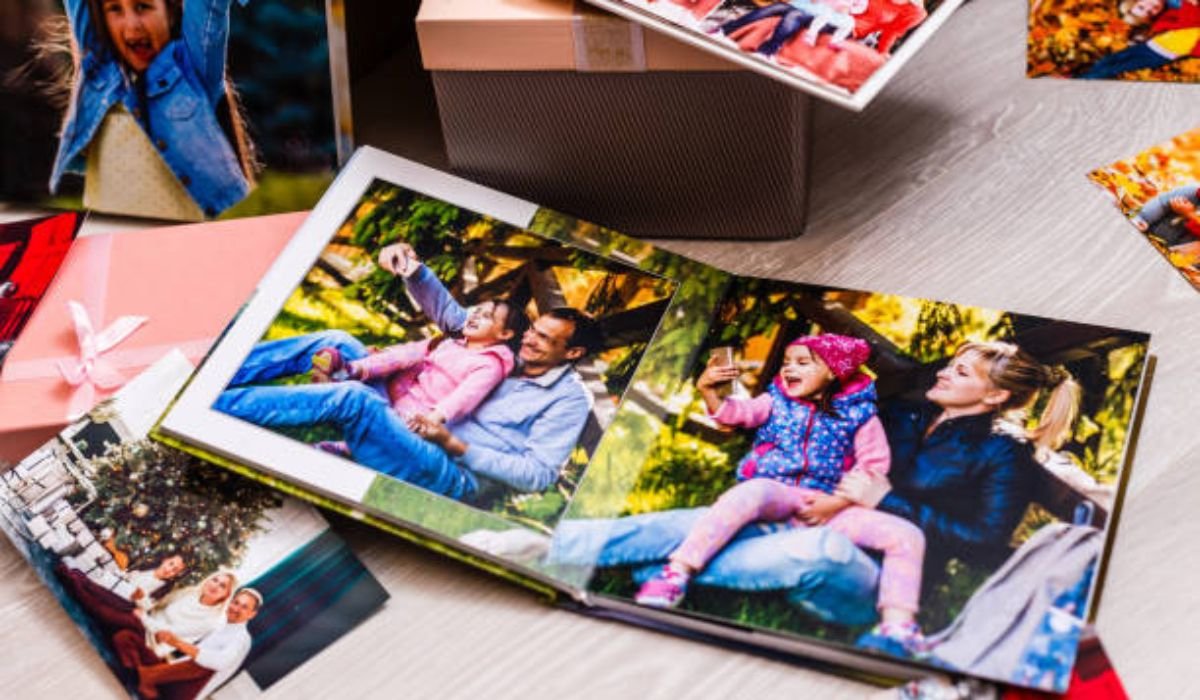Let’s be honest. We’ve all been there. Your phone pings with a “memory” notification—a photo from three years ago that you’ve completely forgotten. You smile for a second, and then you keep scrolling. It’s gone. Again.
We take more photos than any generation in history, yet we have less to show for it. Our most precious memories are trapped in the digital ether, lost in an endless scroll between cat videos and memes. It’s a paradox, isn’t it? We document everything but preserve almost nothing.
But something is shifting. A quiet rebellion is brewing against this digital deluge. People are craving something tangible, something real they can hold in their hands. They’re rediscovering the profound magic of the fotolibro.
This isn’t your grandmother’s heavy, sticky-paged photo album. Oh no. The modern fotolibro is a sleek, professionally crafted piece of personal history. It’s a narrative, a work of art, and a tangible piece of your legacy, all bound together. And for professional photographers, it’s the ultimate portfolio piece that no Instagram feed can ever truly replicate.
So, how do you transform your digital snapshots into a legacy piece that your grandchildren will fight over? Let’s break that down.
What Exactly Is a Fotolibro? More Than Just a Pretty Cover
If you’re thinking a fotolibro is just a fancy word for a photo book, you’re only half right. The term, blending the Italian “foto” (photo) and “libro” (book), hints at its true nature. It’s not just a container for pictures; it’s a storybook where your life is the narrative.
A true fotolibro has a soul. It has a beginning, a middle, and an end. It uses layout, pacing, and design to evoke emotion. Think of it this way:
- A Photo Album: A chronological repository. “Here are the 200 photos from our vacation.”
- A Fotolibro: A curated story. “Here is the story of our sunrise hike, the laughter over spilled gelato, and the quiet moment we watched the sunset.”
It’s this intentionality that separates a simple collection from a cherished heirloom. And the best part? You don’t need to be a graphic designer to create one. With services like ilFotoalbum, the tools are at your fingertips. You just need the vision.
Crafting Your Masterpiece: The 5 Pillars of a Perfect Fotolibro
Anyone can upload photos to a template. But creating a fotolibro that takes someone’s breath away? That requires a bit of strategy. In my experience, it all comes down to these five pillars.
1. The Narrative Arc: Your Life is a Story, Tell It Well
Before you even open the design software, grab a notepad. Seriously. What’s the story you’re trying to tell? A wedding day isn’t just a series of events; it’s a rollercoaster of emotions. Start with the quiet anticipation of getting ready, build up to the ceremony’s climax, slow down for the intimate portraits, and end with the joyous chaos of the reception.
This narrative flow is what guides your reader through the experience. It’s the invisible thread that turns a bunch of pictures into a page-turner.
2. The Paper: It’s Not Just What You See, It’s What You Feel
This is where most DIY projects fall flat. The paper. Honestly, this isn’t talked about enough. The weight, the texture, the finish—it all contributes to the sensory experience of your fotolibro.
- Matte Paper: Offers a soft, non-reflective, and elegant look. It’s timeless and feels beautiful to the touch. Perfect for fine art photography and classic wedding albums.
- Glossy Paper: Delivers vibrant colors and deep contrasts. It makes colors pop and is fantastic for bright, bold vacation photos or newborn pictures.
- Pearl/Satin Paper: The best of both worlds. It has a slight sheen without the fingerprints and glare of glossy. It’s a popular, safe, and professional choice.
When you’re choosing a service, don’t just look at the price; look at the GSM (grams per square meter). A higher GSM means a thicker, more premium-feeling paper. It’s the difference between a flyer and a fine art print.
3. The Binding: The Spine of Your Story
The binding is the structural integrity of your legacy. A poorly bound book will fall apart in a few years. A well-bound one will last a lifetime. Here’s a quick breakdown:
| Binding Type | Best For | Pros | Cons |
| Layflat Binding | Wedding Albums, Professional Portfolios | Pages lie completely flat, allowing for seamless panoramic spreads. No gutter loss. The gold standard. | Higher cost. |
| Perfect Binding | Storybooks, Yearly Recaps | Clean, square spine like a paperback novel. Looks sleek on a shelf. | Does not lay flat, can crack if forced. |
| Screw Post Binding | Artistic Projects, Expandable Albums | Extremely flexible. You can easily add or remove pages later. Very durable. | Industrial look may not suit all styles. |
For my money, if you’re creating a fotolibro meant to be passed down, layflat binding is non-negotiable. It’s the professional’s choice for a reason.
READ ALSO: webfreen com fashion: Your Guide to Style & Sustainability
4. The Layout & Pacing: The Rhythm of Your Memories
Avoid the “cookie-cutter” trap of using the same multi-photo layout on every page. Vary your pacing.
- Full-Bleed Photos: Use a single, powerful image across two pages for maximum impact. It’s your “wow” moment.
- White Space: Don’t be afraid of empty space. A single, small photo centered on a vast white page creates focus and elegance. It gives the viewer’s eyes a place to rest.
- Collages: Use these sparingly to show a sequence of actions or a collection of details (like the wedding rings, flowers, and shoes).
The rhythm of full-page images, collages, and moments of quiet is what makes a fotolibro feel professionally designed.
5. Image Quality: The Unforgiving Rule
This should be obvious, but you’d be surprised. Garbage in, garbage out. For a sharp, high-quality print, you need high-resolution images. Blurry, pixelated photos from a decade-old smartphone camera will look… blurry and pixelated in print.
A quick tip: When you’re exporting photos from your editing software for print, save them as high-quality JPEGs and ensure your resolution is at least 300 DPI (dots per inch). This is one area where you simply cannot cut corners.
Fotolibro vs. The DIY Store-Bought Album: Is There Really a Contest?
Some experts might disagree, but here’s my take: the convenience of a kiosk at a drugstore is a trap. The paper is thin, the inks are often unstable and will fade to a pinkish hue in a few years, and the binding is flimsy.
A professional service like ilFotoalbum uses archival-quality materials and professional-grade printing techniques. We’re not talking about a difference you can just see; it’s a difference you can feel. It’s the difference between a fast-fashion t-shirt and a tailor-made suit. Both cover your back, but only one is built to last and make you feel incredible.
Beyond the Wedding: Unexpected Uses for Your Fotolibro
Sure, weddings and newborns are the classics. But why stop there? Your life is full of stories worth telling.
- The Annual Family Yearbook: Ditch the chaotic digital dump. Curate the best 50-100 photos from the past year into a beautiful annual volume. It’s the modern answer to the family album.
- The Travelogue: That trip to Japan? Don’t just show people your Instagram highlights. Create a fotolibro that captures the essence of the journey—the food, the streets, the landscapes, the people.
- The Portfolio for Creatives: For photographers, artists, and designers, a physical portfolio is a powerful tool. It shows you take your craft seriously and allows your work to be experienced as it was meant to be: in print.
- The “Grandparent Brag Book”: Create a simple, beautiful fotolibro of your kids and send it to the grandparents. It’s a gift that’s infinitely more personal and durable than another frame.
The Final Frame: Your Story is Waiting
In a world that moves too fast, a fotolibro forces you to slow down. It’s an act of preservation. It’s a declaration that your moments, your stories, and your people matter enough to be pulled out of the cloud and given a permanent home.
It’s more than a book. It’s a time capsule. It’s a piece of your family’s history, written in light and ink. So, what story will you tell first? Your most cherished memories are waiting to be remembered, not just recalled.
YOU MAY ALSO LIKE: Protect Your Data: The Essential Guide to Digital Security by www nothing2hidenet










